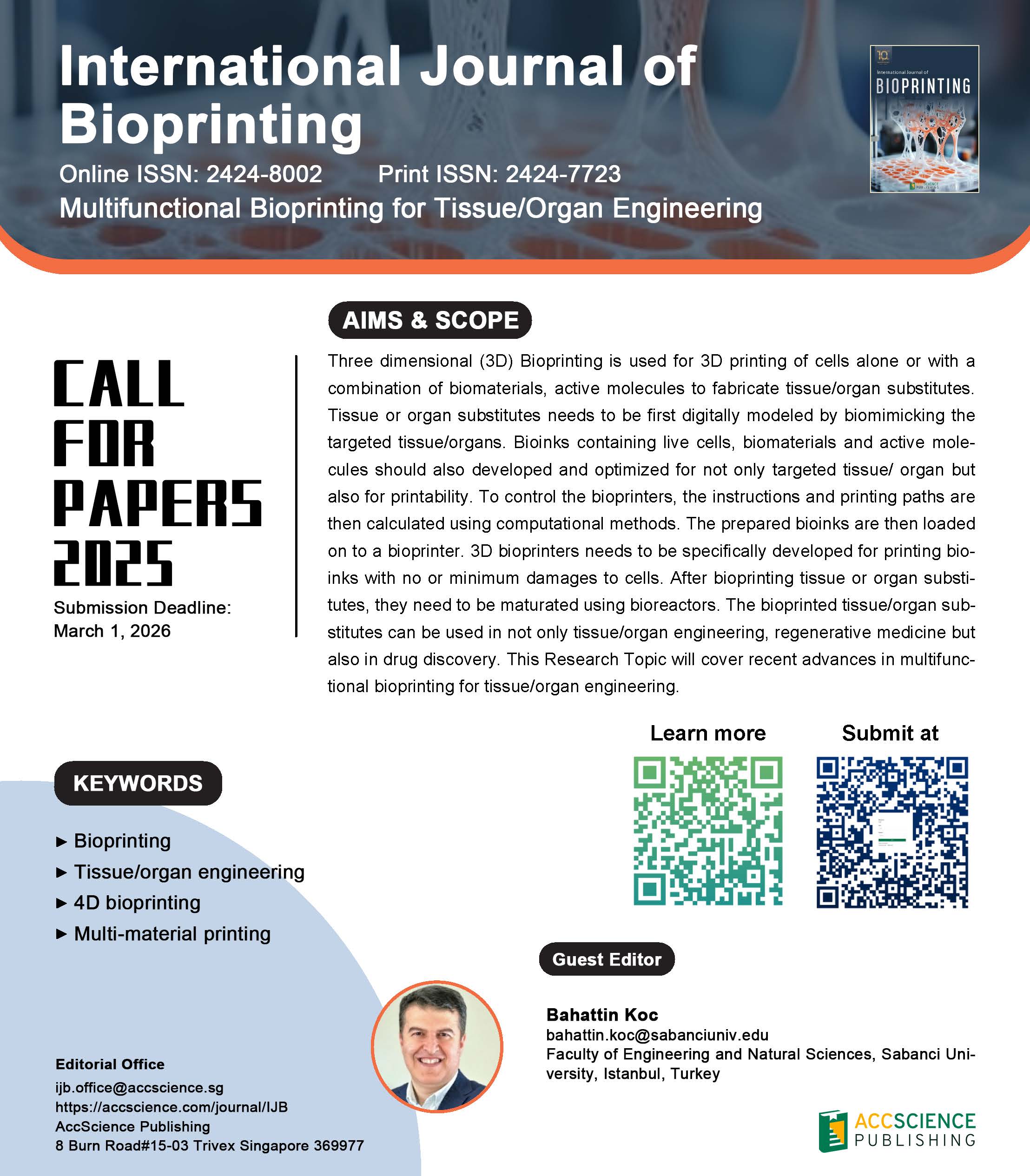
Dear Colleagues,
Three dimensional (3D) Bioprinting is used for 3D printing of cells alone or with a combination of biomaterials, active molecules to fabricate tissue/organ substitutes. Tissue or organ substitutes needs to be first digitally modeled by biomimicking the targeted tissue/organs. Bioinks containing live cells, biomaterials and active molecules should also developed and optimized for not only targeted tissue/ organ but also for printability. To control the bioprinters, the instructions and printing paths are then calculated using computational methods. The prepared bioinks are then loaded on to a bioprinter. 3D bioprinters needs to be specifically developed for printing bioinks with no or minimum damages to cells. After bioprinting tissue or organ substitutes, they need to be maturated using bioreactors. The bioprinted tissue/organ substitutes can be used in not only tissue/organ engineering, regenerative medicine but also in drug discovery. This Research Topic will cover recent advances in multifunctional bioprinting for tissue/organ engineering.
A 3D-bioprinted alginate-MgP scaffold for superior regeneration of calvarial bone defects in a rat model
Customized 3D-printed prosthesis for reconstruction of complex bilateral traumatic knee bone defects: A case report


